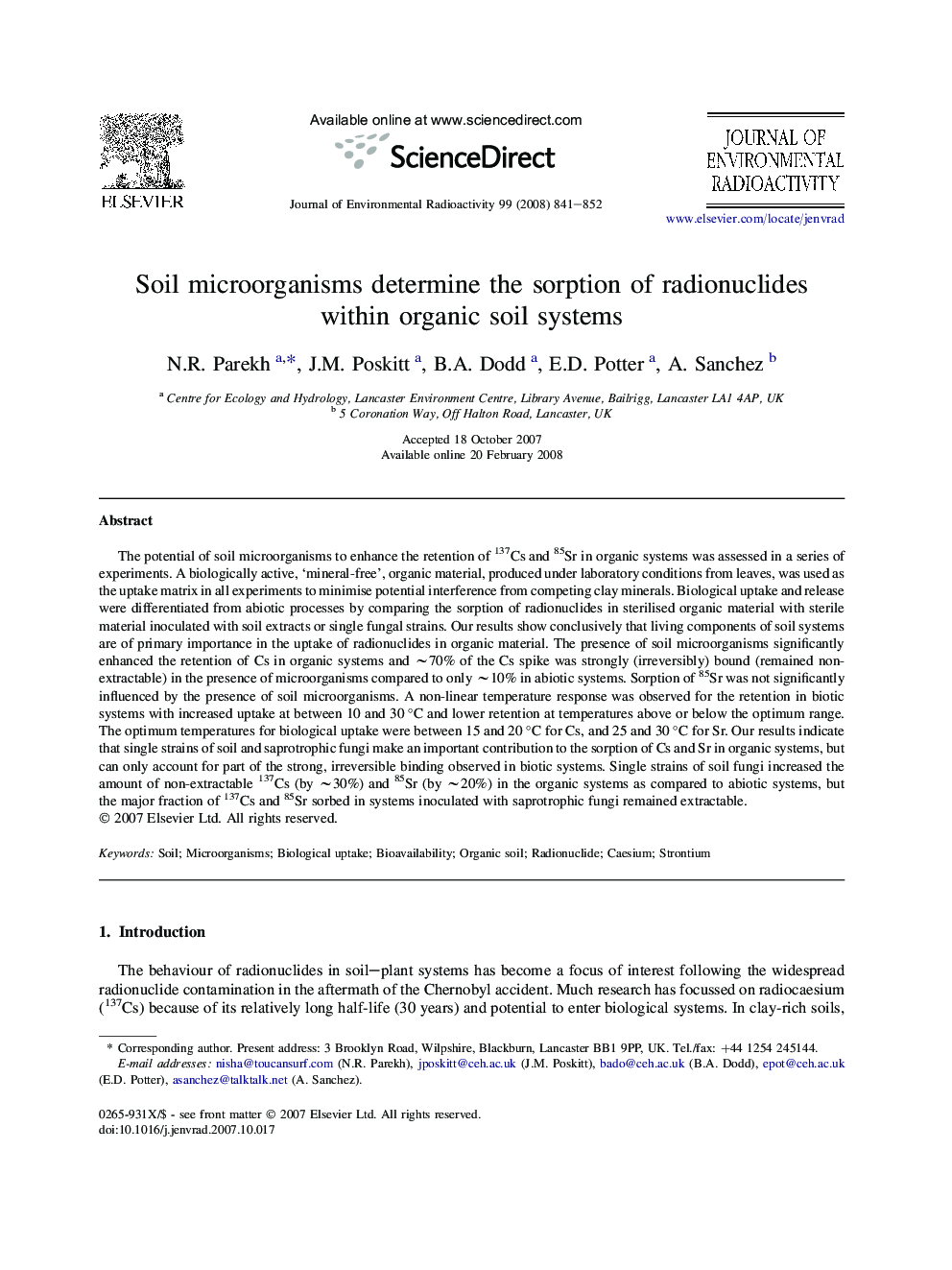| Article ID | Journal | Published Year | Pages | File Type |
|---|---|---|---|---|
| 1739374 | Journal of Environmental Radioactivity | 2008 | 12 Pages |
The potential of soil microorganisms to enhance the retention of 137Cs and 85Sr in organic systems was assessed in a series of experiments. A biologically active, ‘mineral-free’, organic material, produced under laboratory conditions from leaves, was used as the uptake matrix in all experiments to minimise potential interference from competing clay minerals. Biological uptake and release were differentiated from abiotic processes by comparing the sorption of radionuclides in sterilised organic material with sterile material inoculated with soil extracts or single fungal strains. Our results show conclusively that living components of soil systems are of primary importance in the uptake of radionuclides in organic material. The presence of soil microorganisms significantly enhanced the retention of Cs in organic systems and ∼70% of the Cs spike was strongly (irreversibly) bound (remained non-extractable) in the presence of microorganisms compared to only ∼10% in abiotic systems. Sorption of 85Sr was not significantly influenced by the presence of soil microorganisms. A non-linear temperature response was observed for the retention in biotic systems with increased uptake at between 10 and 30 °C and lower retention at temperatures above or below the optimum range. The optimum temperatures for biological uptake were between 15 and 20 °C for Cs, and 25 and 30 °C for Sr. Our results indicate that single strains of soil and saprotrophic fungi make an important contribution to the sorption of Cs and Sr in organic systems, but can only account for part of the strong, irreversible binding observed in biotic systems. Single strains of soil fungi increased the amount of non-extractable 137Cs (by ∼30%) and 85Sr (by ∼20%) in the organic systems as compared to abiotic systems, but the major fraction of 137Cs and 85Sr sorbed in systems inoculated with saprotrophic fungi remained extractable.
